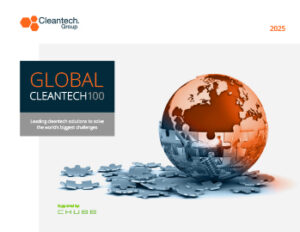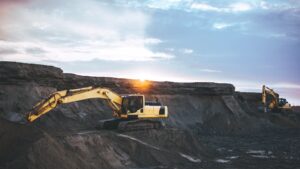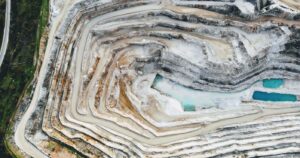2023 Trend Watch – Out of Volatility Emerges Renewed Urgency for Innovation
In 2022, most corners of the world felt the ripple effects (if not direct effects) of the Russian invasion of Ukraine. Occupying many headlines and priorities in the minds of decision-makers has been energy price volatility that resulted from the war and much of the world’s subsequent shift away from Russian oil and gas. While there was an overall cooling in venture capital financing throughout 2022, we have observed marked urgency, especially in the Energy & Power sector, to support, trial, and more quickly adopt technologies that offer the world more energy flexibility.
The growth in energy investments was consistent across the world, and innovators outside of North America also saw a precipitous jump in investments – Europe and Asia Pacific together contributed more incremental growth in the sector than North America.
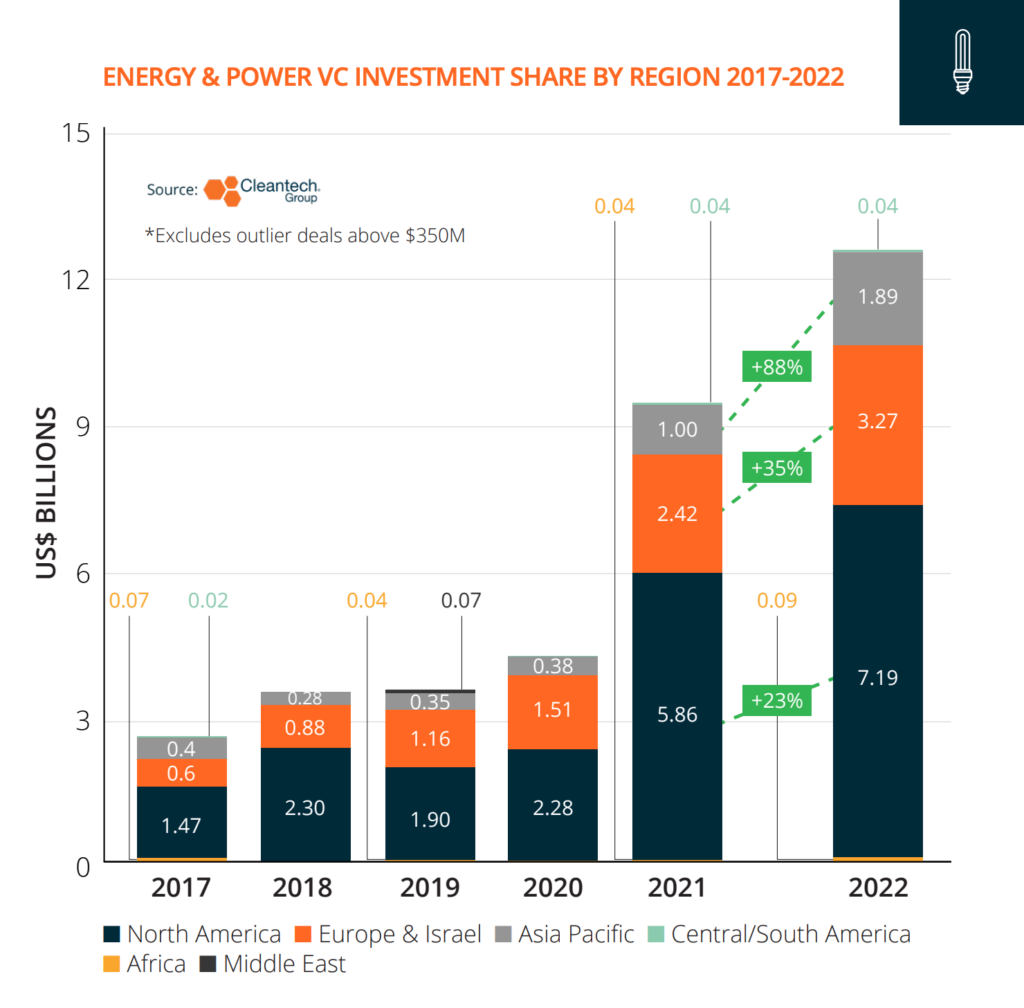
Chief among these trends has been a jump in demand for alternative fuels, renewed enthusiasm for distributed energy and grid flexibility, and an overdue but emerging recognition of technology needed to create climate adaptation resilience. (Note: our 2023 Global Cleantech 100 expands on these trends and more, and puts forward the 100 companies most likely to meet the challenges of 2023). Not surprisingly, a special urgency was observed in Europe:
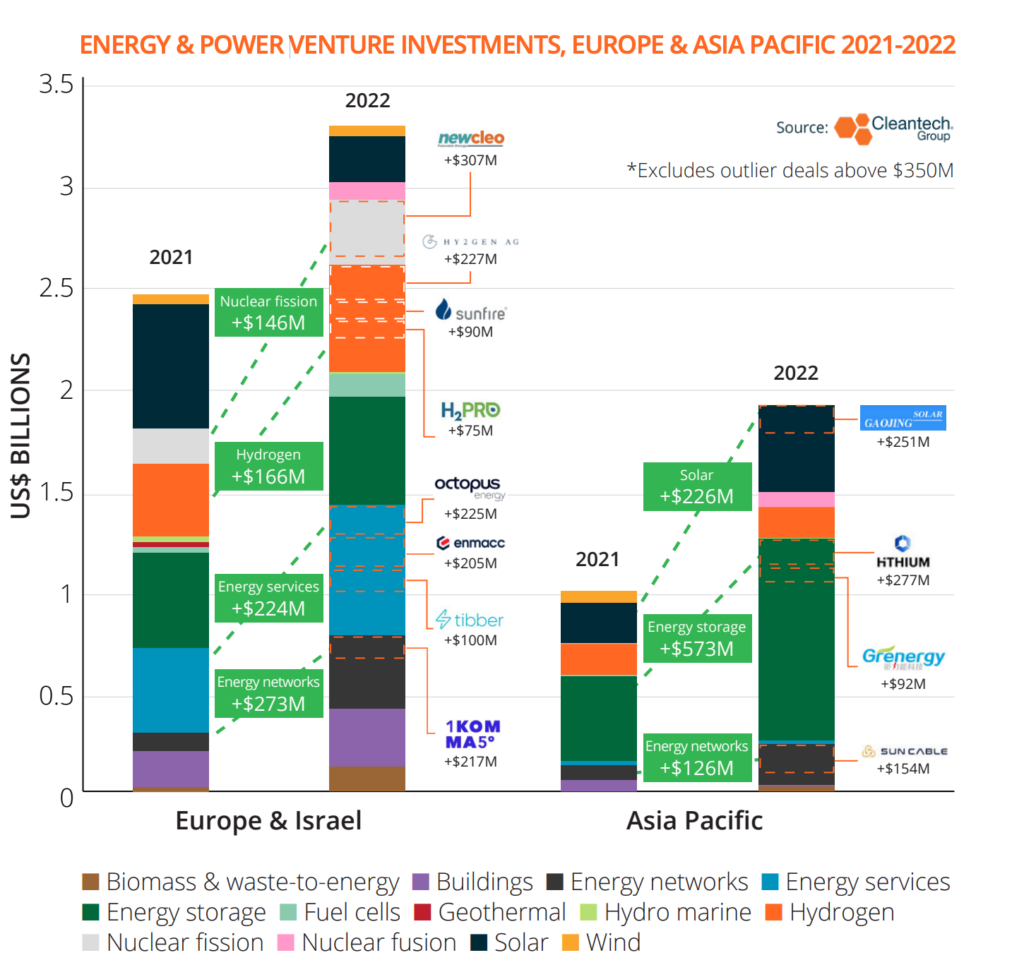
Alternative Fuels Thrust Into Center Stage
- Upstream hydrogen gets a boost: Despite controversy over hydrogen’s ranking in the global clean energy priorities, there is general consensus that it will play a prominent role in the energy transition. Innovators in upstream production, including Monolith and Hy2gen saw significant capital raises in 2022 ($300M and $227M, respectively).
- Clean combustion rises in priority rank: Industrial players have started to envisage a world in which a combination of fuels is required to reduce emissions and hedge against volatility. Fuel agnostic burners company Mainspring Energy offers a case in enthusiasm for this technology, with two large fundraising rounds ($150M and $140M) just 4 months apart in 2022.
- A typically slow-moving cleantech investment sector, waste-to-energy from biomass has picked up in the past two years with a handful of anaerobic digestion innovators IPO’ing in 2021, but enthusiasm for the sector broke out in 2022 with a series of high-profile acquisitions. In terms of venture investments, this area saw an increase of $176M in 2022 from a base of just over $20M in 2021.
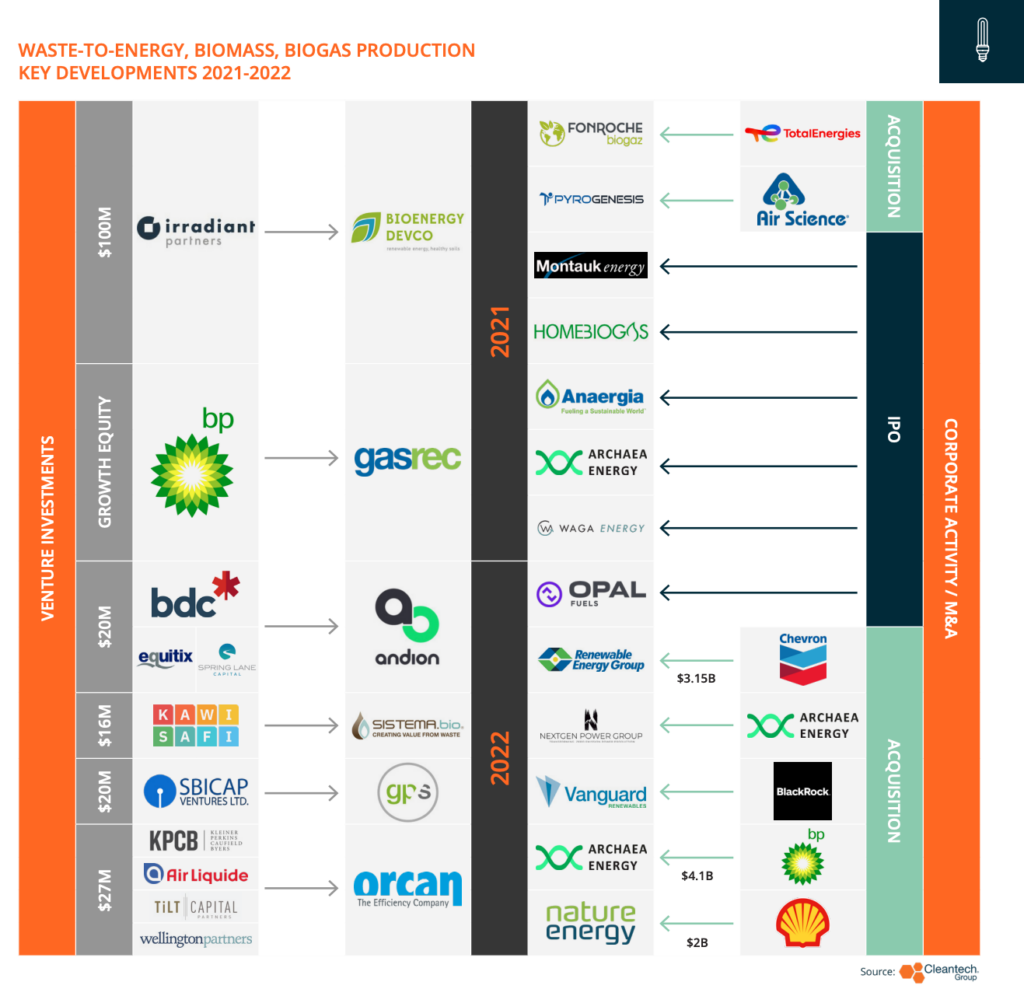
The Disappearing Line Between Energy and Mobility Fades Further
Consumers are simultaneously expanding their electricity use touchpoints while needing to reduce exposure to energy price volatility. A shift in habits is slowly accumulating to a future where consumers will need comprehensive solutions to manage a “portfolio of electrons”, versus multiple solutions to manage, control, and optimize multiple devices.
- In 2022, the U.S. surpassed the EV “tipping point” with over 5% of vehicle sales coming from fully electric vehicles (EVs).
- The oncoming wave of EVs places electrical grids in a reactive position, needing to accommodate more demand for electricity, but also creating an unprecedented opportunity to leverage EVs for grid flexibility.
- Consumers that purchase EVs will likely become customers for solar panels and home energy storage as well, to “charge from the sun” and reduce total cost of ownership of vehicles long-term.
- The technology gap is around systems that can fully optimize all energy assets and also create opportunities for grid participation, where possible, i.e., a “brain” for buildings and homes.
Climate Adaptation – A (No Longer Distant) Decision Point
A key headline coming out of COP27 this past November was the somewhat somber victory of commitment to a “loss and damage” fund that will eventually compensate developing world nations for disasters that result from climate change. Coming regulations will require publicly listed firms to analyze and report on their exposure to climate adaptation issues.
Technologies to predict and manage responses to climate change effects have been developing for years now, but have failed to garner the large fundraising rounds that decarbonization and climate mitigation technologies have. 2022 showed signs of a shift, as we noted the launch of more adaptation-focused venture funds, including Climate Adaptive Infrastructure, a fund putting over $1B into adaptation and resilience technologies, and Convective Capital, a venture fund dedicated specifically to wildfire prevention and control technologies.
We have spoken for a few years about the importance and difficulty of navigating the chaos of the 2020’s. 2022 gave the world a taste of a different flavor of crises that, like COVID-19, had been considered by many but planned for by few. While there is still no shortage of uncertainty, the evidence of increased investment in key sectors affected by 2022’s headline events is an indication that the market does have a motivation to see critical technologies take hold. And if the corporate merger and acquisition activity holds steady in 2023, we can only expect competition to own the “solutions” to this decade’s uncertainty to heat up even further.
